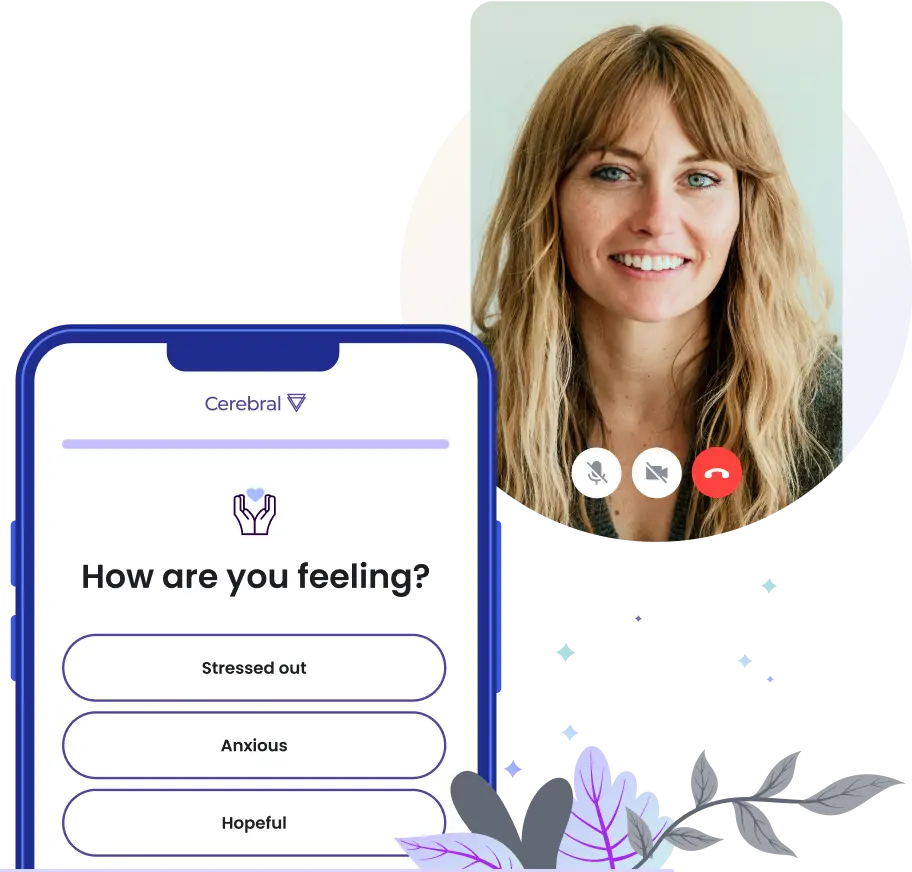Every day, we find ourselves facing choices that, on the surface, seem inconsequential. Yet, for individuals with bipolar disorder, the choice to drink can have real impacts and implications.
The relationship between alcohol and bipolar disorder is complex and can tip the scales of mood, medication effects, and overall mental wellness.
This detailed guide explores how alcohol can affect those with bipolar disorder and the risks of use.
Effects of alcohol on bipolar disorders
Grasping the nuances of the types of bipolar disorder — and how alcohol can distinctly impact each — is crucial in making informed decisions.
Bipolar disorder, formerly known as manic depression, is a mental health condition characterized by extreme mood swings that include emotional highs (mania or hypomania) and lows (depression). These episodes can significantly impact a person's ability to function, think, and relate, leading to other serious health concerns.
Bipolar I disorder
Individuals with bipolar I disorder experience severe mania that may involve breaks from reality (psychosis). If you have bipolar I, drinking alcohol can make the challenges of the condition worse by:
- Interfering with your medication, making it less effective or even harmful.
- Making depressive episodes worse and harder to manage because it’s a depressant.
- Possibly causing you to act even more impulsively or take more risks when you're feeling manic.
It's really important to understand these risks when you’re considering drinking.
Bipolar II disorder
Bipolar II disorder is characterized by at least one episode of major depression and at least one hypomanic episode. People with this type of disorder don’t experience a progression of symptoms to mania.
If you have bipolar II disorder, drinking alcohol can complicate things in several ways:
- Alcohol might hide or confuse the signs of hypomania, making it harder to manage. Since hypomania can still greatly affect decisions and life, not catching it early can be problematic.
- Alcohol can make depressive episodes last longer, happen more often, and be more intense. This is especially risky for those with bipolar II, as they typically face more depression.
- Alcohol can mess with bipolar medication, either weakening its effects or causing negative reactions.
If you have bipolar II, it's essential to make careful decisions about drinking and to keep an open dialogue about use with a healthcare provider.
Cyclothymic disorder
Cyclothymic Disorder involves milder, yet chronic, fluctuations between hypomanic and depressive symptoms. Even though mood swings aren't as extreme as the other bipolar disorders, they’re still impactful and drinking alcohol can complicate things.
If you have cyclothymic disorder, alcohol can worsen depression and make hypomanic episodes riskier by increasing impulsive behaviors. It can also interfere with treatment by obscuring symptoms and reducing the effectiveness of medications.
Therefore, individuals with cyclothymic disorder or any bipolar disorder are advised to use alcohol with caution or not at all. Consult with healthcare providers about the safest course.
Does drinking alcohol make bipolar worse?
It can make symptoms worse. And no matter what type of bipolar disorder you’ve been diagnosed with, the effects of drinking on symptoms are two-fold:
- Because it's a depressant, drinking alcohol can make feelings of sadness or depression much worse.
- The temporary euphoric feelings alcohol can give might feel similar to the highs of mania, causing mood swings to become even more unpredictable and challenging to manage.
The severity of symptoms could differ, as each individual may react differently and a variety of factors could affect alcohol’s impact.
Drinking alcohol with bipolar disorder
Many with the disorder can still drink alcohol; however, practicing moderation is recommended if you and your healthcare provider determine that drinking is okay for you. That still allows you to enjoy social gatherings and celebratory events, but making informed choices around drinking is key.
Here are several best practices:
- Medical consultation: Before considering alcohol, engage in a candid discussion with your healthcare provider. They can offer personalized advice based on your current medication, condition stability, and overall health.
- Limit intake: If your healthcare provider agrees that occasional drinking is safe, work with them to define limits to avoid overconsumption.
- Be in a safe place and take precautions: Understand how mixing alcohol with medications affects you and plan ahead accordingly. Stay safe by having a driver lined up so you won’t drink and drive, and arrange for child- or eldercare when planning to drink.
- Plan ahead: Before attending social events where alcohol will be present, devise a plan. This could include setting a drink limit, ensuring you've eaten, or bringing a non-drinking friend along for support.
- Avoid drinking during mood episodes: Refrain from alcohol if you are experiencing bipolar symptoms, as it can exacerbate mood swings and interfere with your medication's effectiveness.
Monitoring how alcohol affects your mood and symptoms will also help guide your choices, as you’ll start to recognize patterns that may signal problematic interactions between alcohol consumption and bipolar episodes.
There are cases where sobriety is going to be the safest course of action, and there are treatment options to help. That’s why having an open dialogue with your healthcare provider is so important. And, if you find yourself drinking more than you intended or can’t stop drinking, seek professional help.

Drinking alcohol on bipolar medication
If you’re taking medication for bipolar disorder, mixing what you’ve been prescribed with alcohol can have serious risks. The combination of sedatives and alcohol may cause extreme drowsiness, slow down breathing, and, in some cases, result in overdose.
Combining alcohol with mood stabilizers, often used to treat bipolar disorder, can undermine or cancel out their effectiveness. Alcohol can change how these medications are processed in the body, potentially diminishing or undoing their positive effects or increasing adverse side effects.
Additionally, alcohol is known to lower inhibitions and impair judgment, which may make you less careful about taking your medicine. It could lead to missed doses or discontinuing medication without talking to a medical professional first.
Chronic alcohol use can also affect liver function, and the liver is crucial for breaking down many bipolar medications. If your liver isn't working properly, medication levels in the blood could become dangerously high or drop too quickly, making your medication less effective.
Bipolar and alcohol use disorder
Alcohol use disorder (AUD) is when drinking causes distress or harm. Those with bipolar disorder are at a heightened risk for this disease, with approximately 56% of individuals with bipolar I or II disorder having a history of AUD.
This highlights the need to watch for issues with substances. If issues do arise, treatment plans that address both bipolar condition and AUD may be recommended.
Treatment options for alcohol use disorder
One condition can make the other worse, and vice versa, so the ideal approach to treating individuals with bipolar disorder and alcohol use disorder is through integrated treatment.
This involves a combination of medication-assisted treatment, therapy, and support groups. It could also include a detox
and/or rehab program when needed.
- Medication for alcohol use disorder (MAUD): This includes pharmaceutical therapies like naltrexone, disulfiram, acamprosate, topiramate, and gabapentin that help reduce alcohol cravings and prevent relapse. Mood stabilizers are also often used and recommended to manage bipolar symptoms.
- Cognitive behavioral therapy (CBT) and motivational enhancement therapy (MET): These approaches can help identify motivations, address maladaptive behaviors, and support long-term recovery. They also foster resilience, empowering you to identify, confront, and rectify thought patterns, which will also help in managing bipolar disorder.
- Therapy: Seeing a mental health professional regularly can also help you practice effective coping strategies, allowing you to develop healthier ways to handle stress and control your reactions to emotional triggers in alternative ways.
- Support groups: Participation in groups such as Alcoholics Anonymous (AA), Dual Diagnosis Anonymous (DDA), LifeRing Secular Recovery, or other peer support networks can help you by providing accountability partners, coping strategies from people who have experienced the same challenges, and a safe place to speak about issues that arise.
- Detox: Inpatient or outpatient medically supervised detox programs allow someone to withdraw from alcohol, either within a highly structured environment with around-the-clock supervision or from home with regular check-ins that aim to promote safety during the detox process.
- Rehabilitation: Residential or outpatient treatment programs help address the roots of alcohol misuse. Rehab offers a comprehensive approach to recovery, tackling not only the physical aspects of alcohol misuse but also the psychological factors that can contribute to it.
If you’re affected by both bipolar disorder and alcohol use disorder, there are many pathways to recovery. It may not always be the easiest road, but there are people who are ready to help you navigate it.

Cerebral will be with you for every step
If you’re managing bipolar disorder and considering the role alcohol may play in your life, our care team — including licensed prescribers, online therapists, and care counselors — collaborates to create tailored treatment plans that address your mental health needs and substance use concerns.
All from the comfort of your home, you can access integrated mental health treatments, seek personalized therapy, and work with a professional to manage your medication.
We’re partners in this. We recognize your role as a key player in managing your mental health. That’s why we’ve specifically designed our program to be centered around you and your goals. We help you track your progress and understand what to expect as you continue to improve and grow.
If substance use is intertwined with your bipolar experiences, our care team will approach treatment holistically, helping you receive the support necessary to focus on your well-being. Under one affordable monthly subscription, you’d have access to integrated treatment with Cerebral.
Why this matters: Opting for such dedicated, customized, and convenient support can make a difference on the path to living a more stable, fulfilling life.
If you’re ready to explore getting help, we commend you — it’s a brave step. You can learn about what we offer and make the decision that’s right for you.
Or, if you’d like to dig a little deeper into how we’re different, you can learn more about Cerebral Way and how Cerebral compares to other online therapy and medication management options.
Images by wirestock, Freepik, and master1305 on Freepik.
The information in this blog is provided as a general educational resource only, and is not to be used or relied on for any diagnostic or treatment purpose. This information should not be used as a substitute for professional diagnosis and treatment and does not create any patient-physician relationship between you and Cerebral. Please consult your health care provider before making any health care decisions or to get guidance about a specific medical condition.

How to Support a Loved One with Bipolar Disorder

Bipolar vs. BPD: How To Tell The Difference

9 Common Triggers for Bipolar Episodes

Call 911 if you’re having a
mental health emergency
Text Home to 741-741 if you're in emotional
distress and need immediate support
Call or text 988 Suicide &
Crisis Lifeline. Chat service
is available at 988lifeline.org.